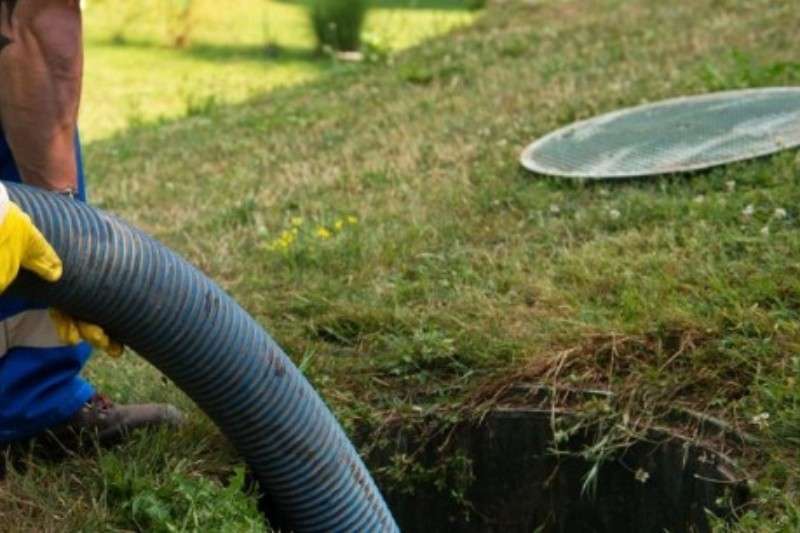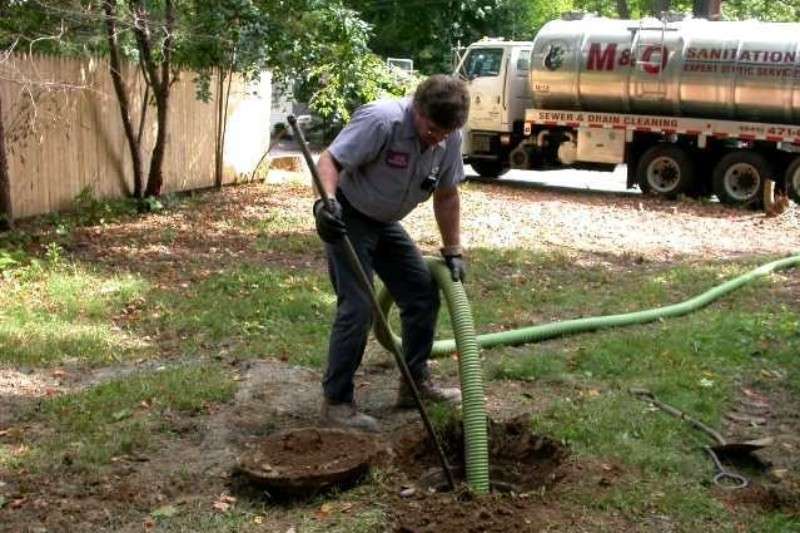If you’re a property owner, septic tanks are an important and necessary system for safely disposing of household sewage. Regular inspection and maintenance of septic systems are paramount to ensure your tank does its job and poses no health hazards or environmental risks. But what exactly should you look out for when inspecting your septic system?
In this blog post, we will provide you with a thorough checklist covering all aspects of the process, from inspection to tips on resolving common issues if they arise. Read on for more information about best practices during inspections.
Introduction to septic tank inspections
Septic tanks are critical to any home’s plumbing system and must be maintained properly to ensure safe, reliable operation. Regular septic tank inspections are essential to identify potential problems before they become serious. By performing regular checks, you can help extend the life of your septic tank and keep it functioning optimally.
The importance of regular septic tank inspections cannot be overstated. By performing these inspections, you can identify and address problems before they become serious issues that could lead to expensive repairs or replacements. In addition, regular inspections can also help ensure that your system meets local codes and regulations.
In general, it is recommended that homeowners have their septic tank inspected at least once a year or every three years, depending on the size and condition of the septic tank pumped well. Regular inspections can help identify potential problems before they become more serious. It is also important to note that hiring a professional service may be necessary if your septic system has not been inspected in several years.
When inspecting your septic tank, reviewing a detailed checklist of items is important to ensure each is addressed correctly. This Septic Tank Inspection Checklist is designed to help you ensure that all necessary steps are taken during your inspection process. By reviewing this checklist, you can rest assured that your septic tank is in good working order and will continue to provide reliable service for years.
Locating the septic tank and drain field
It comes to maintaining the health of your septic and wastewater system, one of the most important steps is locating your septic tank and drain field. Here are some tips for finding the components of your septic system using a Septic Tank Inspection Checklist.
First, inspectors should inspect the area near buildings and driveways for signs of a septic system. This includes looking for areas of fresh soil or pathways leading away from buildings and around the property.
Next, look at the ground cover in that area. If it’s unusually lush, this could be an indication of a leaching field nearby, as well as an indication that there are septic tanks buried in that area.
It’s also good to check for maintenance holes, often used as access points for inspecting leaks, cleaning, and pumping out the tanks. They may be covered with grass, moss, or turf, so take care when looking for them. Make sure you mark the location clearly for future reference.
Finally, if you’re still unable to locate your septic system prior to its components, hiring a professional who can come and inspect the premises may be beneficial. A professional can often easily pinpoint the exact location of your system components, ensuring a thorough inspection.
Inspecting the tank for structural issues

Inspecting the tank for structural issues is important when performing a septic tank inspection. This includes checking for cracks, leaks, and corrosion. Additionally, any other anomalies should be noted to ensure the septic tank size and functions properly. It is also important to assess the condition of tank lids and risers, as well as the condition of any piping or fittings. It is important to note that septic tanks need to be inspected regularly to ensure they are functioning properly and effectively.
Measuring sludge and scum levels
Measuring sludge and scum levels is an important part of septic tank inspection. Sludge, composed of heavy solids that settle to the bottom of the house or septic tank, can greatly reduce the flow and its efficiency if it builds up too much. Scum, which consists of lighter materials, such as grease and oils, forms on the surface of the septic tank.
Sludge and scum levels can be measured in two ways: dipping a measuring stick into the wastewater tank or calculating the approximate volume of accumulated material over time.
When using a measuring stick, please insert it into the bottom of the tank, then measure from the top of the sludge layer to the water level. You may need to use a measuring tape for more accurate results.
If you calculate the approximate volume of accumulated material over time, subtract the current liquid volume in your tank from its original capacity. Then, divide this number by two to get your approximate sludge and scum volume.
Once you have measured the sludge and scum levels, you can determine when it is time for sewage pumping. If the combined levels of sludge and scum exceed 1/3rd of the pump and total liquid capacity, it’s time for pumping.
Checking the drain field for signs of failure
When inspecting a septic system, these checklists have several key components. A Septic Tank Inspection Checklist should include assessing the drain field for signs of failure. This could include identifying wet spots, odors, or other warning signs, such as standing water, that may indicate an issue with drainage or saturation levels in the soil around the drain fields.
It’s also important to evaluate the soil and vegetation conditions around the septic system. This may indicate whether there is proper groundwater drainage or a risk of ground saturation, which can cause major issues with a septic system.
Finally, all septic system components should be inspected to ensure they are in proper working order. This includes the tank lid, baffles, pump chamber, and other components that may need serviced or replaced. These inspections will help to identify potential issues before they become major repair needs.
Inspecting septic system components

Regarding a septic tank inspection checklist, several key components should be checked. First, inspect all system components, including the baffles, filters, and pumps. Second, assess the condition of these components to ensure they are in good working order. Third, check for proper venting to prevent sewer gas and odors from entering the home.
Finally, ensure all alarms function properly to detect any potential problems with the. Taking the time to go through this checklist can help ensure that your septic tank runs smoothly for years.
If you have any questions or concerns about your inspections, contact a professional septic tank service provider for assistance. They can help you troubleshoot any issues and offer tailored advice about how best to maintain your septic system. By taking the necessary steps to inspect, assess, vent, and alarm your septic tank, you can ensure it remains in top condition for years.
the time to go through this checklist can help save you time, money, and inconvenience in the long run. Contact a professional septic tank service provider today for more information on how they can help you with your septic system inspection.
FAQs
How often should I have my septic tank inspected?
Your septic tank should be inspected every few years or as your local health department recommends. It is important to keep inspecting septic tanks back up with regular maintenance to prevent any costly repairs or replacements down the line.
Can I perform a septic tank inspection or hire a professional?
Hiring a professional for any septic system inspection is generally recommended. They have the necessary training and expertise to properly inspect your septic system issues and determine if any potential issues must be addressed.
What are the costs associated with a septic tank inspection?
The cost of a septic tank inspection fluctuates depending on the size of your septic system information, and other factors. Generally, inspections range from $100-$300. It is always best to contact a local professional for an exact quote.
How long does a septic tank inspection typically take?
The amount of time needed to inspect a septic tank varies depending on the size and complexity of the system. On average, a professional septic inspection only takes two to three hours. However, they can take longer if repairs or maintenance are necessary. It is important to be prepared for all eventualities when scheduling your.
What tools or equipment are needed for a septic tank inspection?
A septic tank inspection typically requires various tools and equipment, including plumbing, snakes, and cameras. In some cases, inspectors may need to use dye testing or other specialized methods to evaluate and verify the condition of your system. It is best to consult with a professional before scheduling an inspection so that you are aware of any necessary equipment.
What should I do if I discover an issue during the inspection?
If you discover an issue during your inspection, it is best to contact a professional for advice. They can assess the situation and determine what issues need to be addressed. Depending on the severity of the issue, they may recommend repairs or replacements. It is always better to address issues quickly before they become bigger problems down the line.
How can I maintain a record of my septic tank inspections?
It is always important to keep a record of your septic tank inspections. This information can be used to ensure that all components are functioning properly and that any problems are addressed quickly. You use an inspection log or document to track when each component was last inspected and performed and any repairs made.
Are there any legal requirements for septic tank inspections in my area?
The legal requirements for septic tank inspections may vary depending on where you live. In some areas, there may be laws or regulations that require periodic inspections of your septic tank. It is best to contact your local health department to determine the various safety requirements in your area.
Conclusion
Inspecting your septic tank and its components can be intimidating, but trust us – you can make it a smooth and successful process. Otherwise, don’t hesitate to find a professional inspector instead. Overall, these steps should help you gain peace of mind knowing that even small issues are caught before they become major, costly problems. So follow these steps or print out this helpful septic tank inspection checklist to take with you and keep handy during the process.


